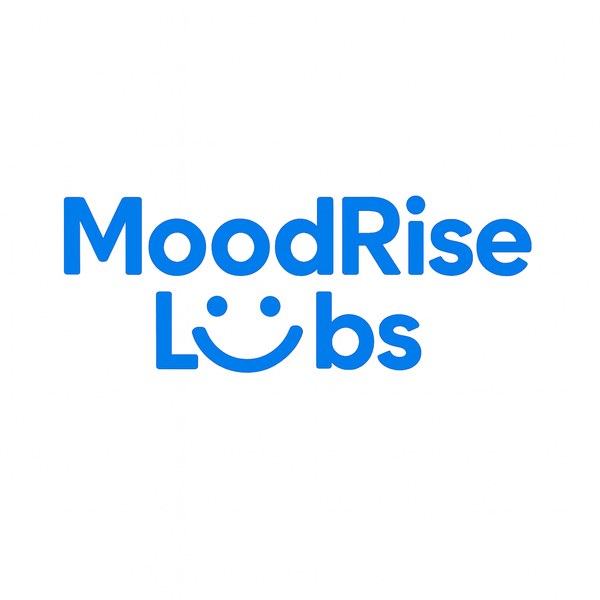Ashwagandha for Anxiety in BPD: Does It Work?
Introduction: When Anxiety Feels Like a Faulty Fire Alarm 🚨
If you live with Borderline Personality Disorder (BPD), you already know anxiety isn’t just “nerves.” It can feel like your body’s fire alarm goes off at the slightest hint of smoke—loud, relentless, and hard to shut down. Many people with BPD describe a baseline of hyperarousal (constant on-edge feeling), plus spikes of panic and worry, especially around relationships, perceived rejection, or uncertainty.
Alongside therapy and (when appropriate) medication, people often look for nutritional and herbal supports that might take the edge off. One of the most popular options is ashwagandha (Withania somnifera), an adaptogenic herb used in Ayurveda for stress, sleep, and resilience.
Big question: Can ashwagandha help reduce anxiety in BPD?
Short answer: There’s promising evidence that ashwagandha can lower stress and anxiety in the general population and improve sleep and cortisol patterns. Direct trials in BPD are limited, so it’s best viewed as a supportive add-on—not a replacement for therapy. With careful dosing and medical guidance (because interactions and side effects exist), it can be a useful brick in the foundation of emotional regulation.
What Is Ashwagandha? (And Why It’s Everywhere) 🌱
Ashwagandha is a small shrub; the root (and sometimes leaves) are used to make extracts standardized to a class of compounds called withanolides. It’s categorized as an adaptogen, meaning it tends to normalize stress responses rather than simply sedate or stimulate.
How Adaptogens Differ From Typical “Calmers”
Not a tranquilizer: Instead of bluntly damping the system, adaptogens aim to modulate it.
Bidirectional effects: When you’re wired and anxious, they may calm; when you’re depleted, they may bolster resilience.
Nervous system nutrition: Many adaptogens influence the HPA axis (hypothalamus–pituitary–adrenal), inflammatory signaling, and neurotransmitters.
Why Anxiety Is So Intense in BPD 🧩

BPD is characterized by emotional dysregulation—rapid surges, sensitivity to threat or abandonment, and difficulty returning to baseline. Biology contributes:
Amygdala hyperreactivity → fast fear/threat detection ⚡
Prefrontal “brakes” underpowered → harder to down-regulate 🚦
HPA axis dysregulation → cortisol spikes, jittery body 🔥
Interpersonal hypersensitivity → anxious attachment, rumination 💭
Because ashwagandha has been shown to lower perceived stress and modulate cortisol, it’s reasonable to explore it as a supportive tool for the anxiety component of BPD.
Mechanisms: How Ashwagandha Might Help Anxiety 🌿🔬

HPA Axis Modulation (Stress Thermostat) 🧯
Several randomized trials in stressed adults report reductions in morning or overall cortisol with ashwagandha compared with placebo. Lower, more stable cortisol often maps to less irritability and fewer “surge” sensations.
GABAergic & Serotonergic Support 😌
Preclinical work suggests withanolides may enhance GABAergic signaling (the brain’s “calm-down” system) and influence serotonin. This could translate into a smoother subjective state: fewer jolts, easier downshifts.
Anti-inflammatory & Antioxidant Effects 🛡️
Chronic stress and emotional dysregulation can elevate inflammatory markers. Ashwagandha’s antioxidant/anti-inflammatory actions may reduce that background “static,” potentially improving mood resilience.
Sleep Promotion 🌙
Multiple trials show improved sleep onset/quality with ashwagandha—crucial because fragmented sleep amplifies emotional volatility the next day.
Takeaway: Mechanistically, ashwagandha targets many anxiety-relevant pathways (cortisol, GABA, inflammation, sleep), which is why it’s compelling as an adjunct for BPD-related anxiety.
What the Evidence Says (So Far) 📊
Stress/Anxiety in General Populations: Several randomized, double-blind, placebo-controlled trials have found moderate reductions in anxiety and perceived stress, along with improved sleep and lower cortisol in adults using standardized root extracts for 6–12 weeks.
Meta-analyses/Systematic Reviews: Pooled analyses generally report small-to-moderate effect sizes for anxiety/stress reduction compared with placebo, with greater benefits at standardized doses and when extracts are root-only.
BPD-Specific Data: Direct, high-quality RCTs in BPD are lacking. That means we’re extrapolating from adjacent populations (generalized anxiety, high-stress adults, subclinical insomnia).
Clinical Reality Check: Many clinicians use it as a trial adjunct when anxiety is prominent, especially if sleep is poor. It should not replace DBT or medications prescribed for comorbidities.Honest bottom line: Evidence supports anxiolytic effects of ashwagandha in stressed/anxious adults. We don’t yet have BPD-specific trials, but the mechanisms align with BPD anxiety physiology.
Who Might Notice the Most Benefit? 🎯
Based on trial patterns and clinical experience, ashwagandha may be most helpful if you have:
Daytime tension + evening “tired but wired”
Racing thoughts and light sleep (long sleep latency)
Stress-triggered GI tension, jaw clenching, or muscle tightness
Cortisol-like symptoms (early-morning jitters, mid-day crashes)
If your main struggle is panic-like spikes or social/performance anxiety, you may still benefit, but L-theanine (acute), breathwork, and skills from DBT often act faster in the moment.
How to Choose a Quality Extract 🧪
Supplements are not all equal. Look for:
Root-only extract (avoids high withaferin A from leaves)
Standardization (e.g., 5–10% withanolides) with third-party testing (NSF, USP, Informed Choice)
Transparent labeling (source, solvent, certificate of analysis on request)
Capsules or powders from reputable brands with batch numbers
Dosing: Practical, Cautious, Personalized 💊
Typical study-backed ranges (always confirm with your clinician):
300 mg of standardized root extract once or twice daily (e.g., 300–600 mg/day)
Timing: Start evening if you’re sensitive (can be mildly sedating). Many split AM + PM after a few days.
With food to reduce nausea.
Trial length: 6–8 weeks before judging effect; consider short “holidays” (e.g., 1–2 weeks off after 8–12 weeks on) if you prefer cycling.
“Start-Low, Go-Slow” Protocol (Example) 🧭
Week 1: 150 mg at night
Week 2: 300 mg at night
Week 3: 150 mg morning + 300 mg night (if tolerated)
Weeks 4–8: Maintain 300–600 mg/day based on effect and side effects
Track it: Use a 0–10 daily anxiety rating, GAD-7 weekly if you like, and a short sleep diary (bedtime, sleep onset, awakenings, restfulness).
Stacking: Safe, Synergistic Combos (With Medical OK) 🧩
Ashwagandha + L-Theanine (100–200 mg PRN) → rapid mental smoothness for spikes 🍵
Ashwagandha + Magnesium Glycinate (200–400 mg nightly) → deeper sleep + muscle relaxation 🌙
Ashwagandha + Omega-3 EPA/DHA (1–2 g/day) → anti-inflammatory + mood support 🐟
Ashwagandha + Vitamin D (titrate to 30–50 ng/mL / 75–125 nmol/L with testing) → better baseline mood, immune balance 🌞
Avoid megastacks. Pick 1–2 supportive agents and evaluate clearly.
Looking for supplements for people with BPD? Click here.
Safety, Side Effects, and When to Avoid ⚠️
Most people tolerate ashwagandha well, but respect the caveats:
Common: GI upset, drowsiness, vivid dreams, headache
Less common/serious (rare): liver enzyme elevations, allergic rash
Caution/avoid if:
Pregnant or breastfeeding (traditionally avoided) 🤰
Thyroid disease (can increase T3/T4; monitor labs if hypothyroid or hyperthyroid) 🦋
On sedatives, barbiturates, or strong CNS depressants (additive effects) 😴
Autoimmune conditions or immunosuppressants (immune-modulating herb—ask your clinician) 🛡️
Diabetes or antihypertensives (possible glucose/BP-lowering; monitor)
History of bipolar mania or hypomania (rare case reports of activation—use with extra caution and close supervision)
Upcoming surgery (stop 1–2 weeks prior)
Golden rule: In BPD—where comorbidities and meds are common—loop your prescriber in before starting.
Breathwork: Fast Relief That Plays Nice With Ashwagandha 💨

Ashwagandha lays a calmer baseline; breathwork gives you on-demand control. Three protocols:
Physiological Sigh (2 quick inhales + slow exhale) x 5–10
Rapidly reduces sympathetic arousal; great before a hard conversation.
Extended Exhale (in 4s, out 8s) for 2–5 minutes
Strong vagal “brake,” ideal when you feel a surge building.
Resonance Breathing (5–6 breaths/min ~ 4–6 weeks daily)
Trains HRV (heart–brain rhythm). Think of it as cardio for calm.
📝 Pairing tip: Take your evening ashwagandha with 10 minutes of extended exhale and gentle stretching. Many people report better sleep within a week.
Want to try Breathwork? Click Here.
Therapy Remains the Engine 🔧 (Ashwagandha Is the Octane Booster)
Dialectical Behavior Therapy (DBT) is the gold standard for BPD. Skills you’ll use forever:
Mindfulness (observe/describe without judgment) 🧘
Distress tolerance (ice-dive, TIP skills, self-soothing) 🌊
Emotion regulation (opposite action, PLEASE skills) 🎛️
Interpersonal effectiveness (DEAR MAN, FAST, GIVE) 🤝
Other helpful modalities:
Schema Therapy (deep pattern repair)
EMDR/Trauma-Focused therapies (for past adverse events)
MBT (Mentalization-Based Treatment) (seeing minds clearly under stress)
How ashwagandha fits: It may lower the physiological noise, so you can practice skills more effectively, sleep better between sessions, and recover after emotionally heavy work.
Looking for online therapy for people with BPD? Click Here.
A Practical 6-Week Calm-Building Plan 📅
Week 0 (Prep)
Baseline logs: 7 days of anxiety (0–10), sleep, triggers.
Discuss ashwagandha with clinician; check thyroid, med list, and pregnancy status.
Weeks 1–2 (Foundation)
Start ashwagandha 150–300 mg nightly.
Breathwork: extended exhale 5 min AM + 5 min PM.
DBT diary card: track urges, skills used, outcomes.
Weeks 3–4 (Refine)
If no daytime sedation, add 150–300 mg morning.
Add L-theanine 100–200 mg PRN for spikes (optional).
Practice resonance breathing 10 minutes/day; short physiological sighs before known triggers.
Weeks 5–6 (Consolidate)
Reassess: anxiety scores, sleep latency, morning cortisol “feel.”
Keep what’s working; consider cycling off for 1–2 weeks after week 8 if you prefer periodic breaks.
Review with clinician; adjust dose or discontinue if side effects.
Real-World Scenarios (How It Plays Out) 🎬
Scenario A: Nighttime Spiral
You ruminate before bed and wake multiple times. Ashwagandha at night + magnesium glycinate + 10 minutes of extended exhale → faster sleep onset, fewer awakenings, smoother mornings.
Scenario B: Daytime Hypervigilance
You’re braced for social friction and rejection. A morning micro-dose (150 mg) + DBT “Check the Facts” + physiological sighs before meetings → quieter body, clearer thinking, less reactivity.
Scenario C: Therapy Integration
Hard sessions leave you jittery. Ashwagandha supports post-session settling, allowing you to consolidate skills and sleep instead of spiraling.
FAQs 🤔
Will I feel it right away?
Some people notice milder edges within a few days, especially around sleep. Most trials evaluate at 4–8 weeks.
Can I take it with SSRIs or mood stabilizers?
Sometimes, yes—but only under medical supervision due to additive sedation or metabolic interactions.
What if it makes me too sleepy?
Shift the dose earlier in the evening or reduce to 150–300 mg/day. If grogginess persists, it may not be your herb.
Is more better?
Not necessarily. Many benefits plateau around 300–600 mg/day of standardized root extract.
The Verdict: Does It Work for BPD Anxiety? ✅/⚠️
Supportive? Very likely—for stress reactivity, sleep quality, and overall anxiety tone.
BPD-specific evidence? Not yet robust. We rely on mechanisms + adjacent trials.
Best use case: As a thoughtful adjunct to DBT and lifestyle regulation, especially when sleep and high-tension stress patterns are present.
Non-negotiables: Therapy remains central; medical oversight is wise; and breathwork gives you rapid, portable control.
If you try it, do it deliberately: quality extract, conservative dosing, clear tracking, and an exit plan if it’s not helpful.
References 📚
(A curated mix of clinical trials, reviews, and reputable summaries; not an exhaustive list.)
Chandrasekhar, K., Kapoor, J., & Anishetty, S. (2012). A prospective, randomized double-blind, placebo-controlled study of safety and efficacy of a high-concentration full-spectrum ashwagandha root extract in reducing stress and anxiety in adults. Indian Journal of Psychological Medicine, 34(3), 255–262.
Lopresti, A. L., & Drummond, P. D. (2019). Efficacy of ashwagandha (Withania somnifera) in the reduction of stress and anxiety: A systematic review. Journal of Alternative and Complementary Medicine, 25(8), 1–13.
Langade, D., et al. (2019). Efficacy and safety of ashwagandha root extract in insomnia and anxiety: A double-blind, randomized, placebo-controlled study. Cureus, 11(9), e5797.
Pratte, M. A., et al. (2014). An evidence-based systematic review of ashwagandha by the Natural Standard Research Collaboration. Alternative Medicine Review, 19(3), 208–219.
Ng, Q. X., et al. (2021). A meta-analysis of randomized controlled trials examining the effect of Withania somnifera on stress and anxiety. Phytotherapy Research, 35(10), 1–12.
National Center for Complementary and Integrative Health (NCCIH). Ashwagandha: What You Need To Know. (Fact sheet).
Linehan, M. M. (2014). DBT Skills Training Manual (2nd ed.). Guilford Press.
Porges, S. W. (2011). The Polyvagal Theory. W. W. Norton & Company.
Koob, G. F., & Schulkin, J. (2019). Addictive and stress disorders: Overlap and interactions. Philosophical Transactions of the Royal Society B, 374(1766), 20180135. (for HPA axis/stress context)
Related Posts
-

Supplements for Staying Present and Grounded
L-Theanine is nature’s calm focus enhancer 🍃. Derived from green tea, it promotes relaxation without drowsiness by balancing GABA, serotonin, and dopamine. Learn how this amino acid supports smooth focus, emotional balance, and mindful presence in daily life.
-

Supplements That Support Emotional Openness
Emotional openness starts in the body 🌿. When your nervous system feels safe, your heart can express freely. Learn how supplements like magnesium, Ashwagandha, and L-theanine support calm connection, balanced emotions, and the courage to stay authentically open.
-

Daily Supplement Routine for Consistent Confidence
Confidence is built through rhythm, not luck 🌿. A daily supplement routine can help your energy, mood, and focus stay balanced from morning to night. Learn how adaptogens, magnesium, and B vitamins work together to create steady calm and lasting self-assurance.
-
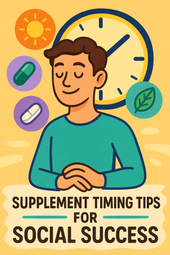
Supplement Timing Tips for Social Success
Social confidence has its own rhythm 🌿. When you time your supplements to match your body’s natural energy cycles, calm and focus align effortlessly. Learn how magnesium, L-theanine, and adaptogens can help you stay grounded, charismatic, and fully present at just the right moment.
-

Supplements for Confident Public Speaking
Public speaking confidence begins with biology 🎤🌿. When your nervous system is calm and your neurotransmitters are balanced, your voice, focus, and presence flow naturally. Learn how supplements like magnesium, GABA, and adaptogens can align your body’s chemistry with the calm clarity you need to speak authentically.
-

Travel-Friendly Supplements for On-the-Go Confidence
Magnesium is the ultimate travel mineral for calm and balance ✈️🌿. It relaxes the nervous system, eases stress from jet lag or fatigue, and supports muscle and mental recovery. Discover how this essential nutrient keeps you centered, focused, and energized wherever your journey takes you.
-

Supplements for Confident Video Calls
Magnesium is the mineral that brings calm to both body and mind 🌿. It supports relaxation, better sleep, and a stable mood by regulating cortisol and soothing the nervous system. Learn how magnesium supplements can restore balance, reduce anxiety, and help you feel centered under stress.
-

Ashwagandha for Calming the Stress Response
Ashwagandha helps your body remember how to relax 🌿. As one of the most trusted adaptogens, it calms the stress response by lowering cortisol, soothing the nervous system, and restoring natural energy balance. Learn how this ancient herb promotes deeper sleep, emotional steadiness, and resilience in today’s high-stress world.
-

How GABA Supplements Can Help You Feel Grounded
GABA is the brain’s natural calm signal 🌿. When life feels overwhelming, this neurotransmitter helps quiet mental noise, relax muscles, and restore emotional balance. Learn how GABA supplements can calm the nervous system, reduce anxiety, and help you feel grounded in your body again.
-
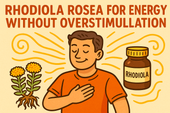
Rhodiola Rosea for Energy Without Overstimulation
Rhodiola rosea offers a rare kind of energy — one rooted in calm, not chaos 🌿. Known as the golden root, this adaptogen enhances endurance, focus, and mood by balancing cortisol and supporting the nervous system. Discover how Rhodiola restores natural vitality without the overstimulation of caffeine or stress-driven fatigue.
-
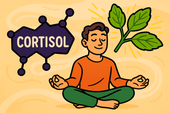
Holy Basil and Cortisol Control
Holy basil, or Tulsi, is one of nature’s most powerful adaptogens 🌿. Revered in Ayurvedic medicine for centuries, it helps balance cortisol, calm the mind, and protect the body from stress. Learn how holy basil restores hormonal harmony, supports energy, and promotes emotional resilience in a fast-paced world.
-
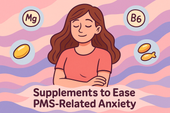
Supplements to Ease PMS-Related Anxiety
Hormones are the body’s messengers — guiding mood, energy, metabolism, and balance. 🌿 When these chemical signals flow in harmony, life feels stable and calm. Learn how nutrients, sleep, and stress management help keep hormonal communication clear, supporting emotional steadiness and overall vitality.
-
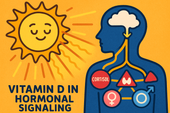
The Role of Vitamin D in Hormonal Signaling
Testosterone is more than a hormone — it’s a signal of strength, motivation, and vitality 💪. Learn how this key molecule shapes energy, mood, muscle growth, and focus in both men and women. Discover how nutrition, vitamin D, and minerals like zinc and magnesium support healthy testosterone signaling for balanced power and performance.
-

Magnesium for Hormonal and Nerve Function
Magnesium is the mineral that connects calm and vitality ⚡. It fuels nerve transmission, supports hormonal balance, and restores the body’s ability to relax under stress. Learn how magnesium strengthens communication between the nervous and endocrine systems, stabilizing cortisol, thyroid, and reproductive hormones for true equilibrium.
-

Zinc and Its Role in Hormonal Stability
Zinc is one of the body’s most powerful regulators ⚖️—a trace mineral that keeps hormones, metabolism, and energy in perfect rhythm. Learn how zinc supports testosterone, thyroid function, cortisol balance, and emotional stability while protecting against modern stress and deficiency. Discover why restoring zinc can help your body feel grounded, focused, and hormonally resilient.
-
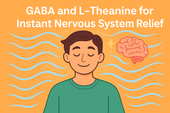
GABA and L-Theanine for Instant Nervous System Relief
When stress hits, your nervous system needs relief — not more stimulation 🌿. Discover how GABA and L-theanine work together to calm the body, quiet racing thoughts, and restore inner balance. Learn the science behind these natural compounds that ease tension, support emotional stability, and bring instant peace without sedation.
-
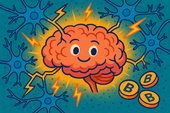
B-Vitamins for Faster Nerve Communication
Vitamin B1, or thiamine, is your brain’s ignition key 🔑—turning food into cellular energy and powering rapid nerve signaling. Discover how this essential nutrient fuels neurotransmitter activity, supports focus and coordination, and prevents fatigue or mental fog. Learn why maintaining optimal thiamine levels keeps your nerves firing fast and your mind sharp.
-

Supplements That Help You Stay Alert Without Anxiety
L-theanine is nature’s secret for calm focus and balanced energy 🌿. Found in green tea, this gentle amino acid promotes relaxation, supports alpha brain waves, and helps you stay alert without stress or grogginess. Discover how L-theanine can enhance focus, improve sleep quality, and restore mental calm in a fast-paced world.
-
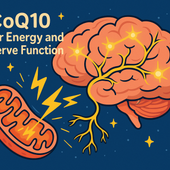
CoQ10 for Energy and Nerve Function
CoQ10 powers every cell in your body—from your heart to your brain ⚡. Learn how this essential compound fuels mitochondria, boosts nerve function, and protects your brain from oxidative stress. Discover how supplementing with CoQ10 can restore energy, sharpen focus, and support long-term neurological vitality.
-
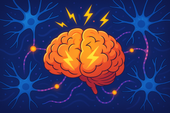
Supplements That Support Nerve Signaling for Mental Energy
Your brain’s electrical network depends on magnesium—one of the most vital minerals for nerve signaling, calm focus, and steady mental energy ⚡. Learn how this essential nutrient powers neurotransmission, supports relaxation, and helps protect your nervous system from stress overload—so your mind feels balanced, alert, and resilient every day.
-
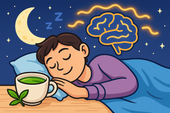
L-Theanine for Sleep Without Grogginess
L-theanine offers a natural path to better sleep—without the next-day fog. 🌙 Found in green tea, this gentle amino acid calms the mind, lowers stress hormones, and promotes deep relaxation without sedation. Learn how L-theanine balances your brainwaves, reduces nighttime anxiety, and helps you wake up refreshed, alert, and clear-minded.
-

Supplements to Support the Circadian Rhythm
Your body’s natural clock depends on more than just sunlight—it also relies on key nutrients to stay in sync. 🌞🌙 Discover the best supplements to support your circadian rhythm, from melatonin and magnesium for deep sleep to vitamin D and adaptogens for morning energy. Learn how to realign your internal clock for better rest, sharper focus, and stable mood every day.
-

Melatonin and Cortisol: The Night vs. Day Hormones
Melatonin and cortisol are your body’s night-and-day hormones—one helping you drift into deep sleep, the other powering your alertness each morning. 🌙☀️ Learn how these two forces work together to regulate your energy, mood, and recovery. Discover how modern stress, artificial light, and poor routines can throw them off balance—and how to naturally reset your rhythm for calm nights and focused days.
-
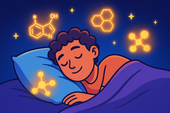
Supplements for Deeper Sleep and Nervous System Reset
Struggling to sleep even when you’re exhausted? 🌙 Discover how to reset your nervous system and achieve deeper, more restorative rest with the right blend of supplements, breathwork, and therapy. From magnesium and L-theanine to slow exhalations and somatic healing, this guide helps you rebuild your body’s natural rhythm of calm and recovery—so you can wake up truly renewed.
-
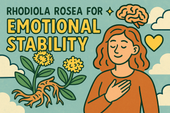
Rhodiola Rosea for Emotional Stability: Finding Balance Through Resilience
Stress is the body’s natural alarm system — useful in bursts, but draining when it never turns off. Learning to regulate it helps restore calm focus, emotional balance, and physical vitality. 🌿💫
-
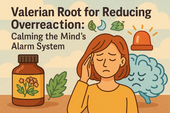
Valerian Root for Reducing Overreaction: Calming the Mind’s Alarm System
GABA is the brain’s natural brake pedal — calming overstimulation and helping you think clearly under stress. When balanced, it brings a sense of inner peace, emotional control, and focus. 🌿🧠💫
-

Supporting Adrenal Health for a Steadier Mood
Cortisol is the body’s built-in stress alarm — essential in short bursts but harmful when constantly elevated. Learning to balance it naturally restores calm, focus, and emotional stability. 🌿⚖️
-

Cold Showers and Adaptogens for a Reset: Reclaiming Energy, Calm, and Control
Adaptogens help the body adapt to stress, restoring calm energy and balance. These ancient herbs strengthen resilience, regulate mood, and support focus — helping you stay grounded through life’s ups and downs. 🌿💫
-
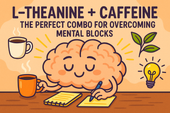
L-Theanine + Caffeine: The Perfect Combo for Overcoming Mental Blocks
Neurotransmitters are the brain’s messengers — tiny molecules that shape how we think, feel, and focus. When they’re in balance, we experience calm energy, clear thinking, and emotional harmony. 🌿🧠✨
-

How Magnesium Supports Focus and Reduces Procrastination Fatigue
Magnesium is the quiet mineral behind mental clarity and steady focus. By calming the nervous system and restoring cellular energy, it helps transform fatigue and overthinking into calm, productive flow. 🌿⚡🧠
-

B Vitamins for Beating Procrastination and Boosting Energy
Procrastination isn’t just a mindset — it’s often a signal of low energy and nutrient depletion. B vitamins recharge the brain’s motivation circuits, boosting focus, clarity, and the drive to take action. 🌿⚡🧠
-
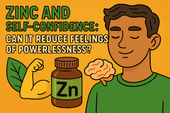
Zinc and Self-Confidence: Can It Reduce Feelings of Powerlessness?
Zinc isn’t just a mineral — it’s the foundation of emotional strength. By balancing neurotransmitters and calming the nervous system, it helps you feel more centered, assertive, and confident from the inside out. 🌿💪
-

How Vitamin D Deficiency Impacts Emotional Resilience in Co-Dependent Patterns
Co-dependency is the emotional tug-of-war between connection and self-loss — a pattern born from giving too much and receiving too little. Learning to untangle this dynamic allows for real love rooted in balance, not fear. 🌿💛
-

B Vitamins for Mood Stability and Self-Worth in Co-Dependency
Vitamin B1, or thiamine, powers both the body and the brain — fueling focus, energy, and emotional clarity. Supporting your nervous system with this essential nutrient helps restore calm and mental resilience. 🌿⚡🧠
-
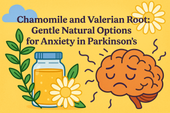
Chamomile and Valerian Root: Gentle Natural Options for Anxiety in Parkinson’s
Anxiety often feels like a storm inside the mind — racing thoughts, tightness, and unease that make it hard to focus or rest. But learning to understand and calm that inner storm opens the door to peace and emotional balance. 🌿🧠
-
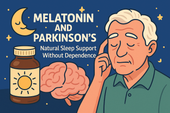
Melatonin and Parkinson’s: Natural Sleep Support Without Dependence
Melatonin is the body’s natural sleep hormone — guiding your mind into rest and your body into recovery. Supporting its natural rhythm can improve sleep quality, mood, and overall health without dependence. 🌙🧠
-
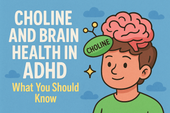
Choline and Brain Health in ADHD: What You Should Know
Inflammation can quietly affect both the body and mind, disrupting focus, mood, and energy. Understanding how it works — and how to calm it — is key to restoring balance, clarity, and long-term health. 🌿🧠
-
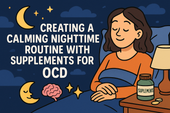
Creating a Calming Nighttime Routine with Supplements for OCD
Sleep is the brain’s nightly repair ritual — a time when emotional chaos settles and clarity returns. Prioritizing deep rest restores focus, calm, and resilience, helping both the body and mind recover naturally. 🌙🧠
-
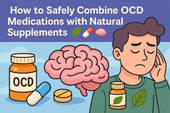
How to Safely Combine OCD Medications with Natural Supplements
Supplements bridge the gap between nutrition and mental wellness — supporting focus, calm, and energy from within. The right combination of nutrients can help balance mood, sharpen the mind, and restore long-term resilience. 🌿🧠
-
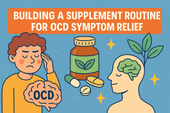
Building a Supplement Routine for OCD Symptom Relief
OCD can feel like being trapped in your own thoughts — a battle between control and chaos. Understanding the science behind these cycles is the first step toward breaking free and finding calm within the mind. 🌿🧠
-
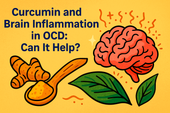
Curcumin and Brain Inflammation in OCD: Can It Help?
Inflammation doesn’t just affect the body — it can silently influence the brain, fueling anxiety, fatigue, and mental fog. By understanding how inflammation works, we can learn how to calm the nervous system and restore inner balance. 🌿🧠
-
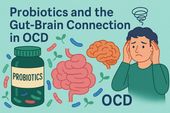
Probiotics and the Gut-Brain Connection in OCD
Serotonin, often called the “feel-good” chemical, shapes our mood, focus, and emotional balance. By keeping this neurotransmitter in harmony, we support calm thinking, better sleep, and greater mental resilience. 🌿🧠
-

B Vitamins and OCD: Supporting Energy and Neurotransmitter Balance
OCD isn’t just about habits — it’s about the brain’s struggle to find control in chaos. Understanding the neurological roots behind intrusive thoughts can help replace fear with clarity and guide healing toward calm awareness. 🌿🧠
-
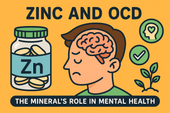
Zinc and OCD: The Mineral’s Role in Mental Health
Zinc is more than a trace mineral — it’s a key regulator of mood, memory, and emotional balance. By stabilizing neurotransmitters like serotonin and glutamate, zinc helps calm obsessive thought patterns and supports overall mental clarity. 🌿🧠
-
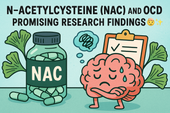
N-Acetylcysteine (NAC) and OCD: Promising Research Findings
Antioxidants act as the body’s natural defense system, neutralizing free radicals that damage brain cells and worsen anxiety or fatigue. Supporting antioxidant balance with nutrition and supplements helps protect focus, memory, and emotional stability. 🌿🧠
-
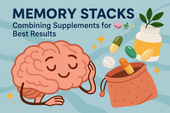
Memory Stacks: Combining Supplements for Best Results
Memory weaves the story of who we are — connecting past, present, and future through every experience we store and recall. Strengthening memory means nurturing the brain’s energy, balance, and emotional calm so learning becomes effortless. 🌿🧠
-
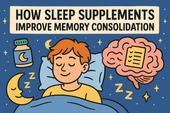
How Sleep Supplements Improve Memory Consolidation
Stress can cloud thinking, disrupt sleep, and weaken memory — but understanding its effects on the brain is the first step toward calm. By learning to regulate the nervous system, we can protect focus, energy, and emotional balance. 🌿🧠
-
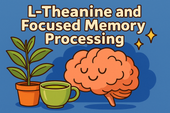
L-Theanine and Focused Memory Processing
Science is the art of curiosity and precision — a quest to understand the unseen patterns that shape life. From molecules to galaxies, every discovery begins with observation, imagination, and the courage to ask “why.” 🔬💡
-
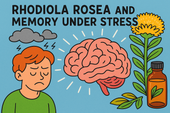
Rhodiola Rosea and Memory Under Stress
Stress clouds memory, slows thinking, and drains energy — but the good news is, the brain can recover. By understanding how stress affects focus and emotion, we can learn to regulate it, restore clarity, and protect long-term cognitive health. 🌿🧠
-
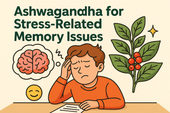
Ashwagandha for Stress-Related Memory Issues
Adaptogens are nature’s answer to modern stress. These powerful herbs — like Ashwagandha, Rhodiola, and Holy Basil — help balance cortisol, support calm focus, and strengthen the body’s resilience, bringing the mind back to harmony. 🌿🧘♀️
